Huiling You
Event-based evaluation of abstractive news summarization
Jul 01, 2025


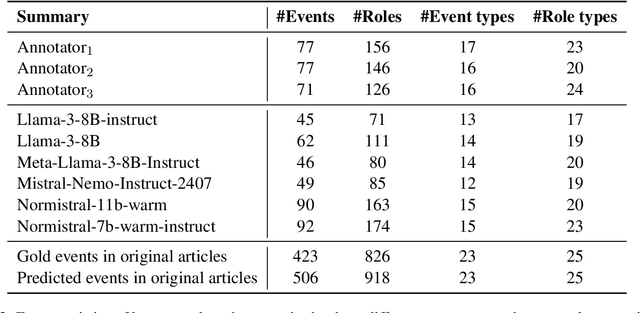
Abstract:An abstractive summary of a news article contains its most important information in a condensed version. The evaluation of automatically generated summaries by generative language models relies heavily on human-authored summaries as gold references, by calculating overlapping units or similarity scores. News articles report events, and ideally so should the summaries. In this work, we propose to evaluate the quality of abstractive summaries by calculating overlapping events between generated summaries, reference summaries, and the original news articles. We experiment on a richly annotated Norwegian dataset comprising both events annotations and summaries authored by expert human annotators. Our approach provides more insight into the event information contained in the summaries.
JSEEGraph: Joint Structured Event Extraction as Graph Parsing
Jun 26, 2023Abstract:We propose a graph-based event extraction framework JSEEGraph that approaches the task of event extraction as general graph parsing in the tradition of Meaning Representation Parsing. It explicitly encodes entities and events in a single semantic graph, and further has the flexibility to encode a wider range of additional IE relations and jointly infer individual tasks. JSEEGraph performs in an end-to-end manner via general graph parsing: (1) instead of flat sequence labelling, nested structures between entities/triggers are efficiently encoded as separate nodes in the graph, allowing for nested and overlapping entities and triggers; (2) both entities, relations, and events can be encoded in the same graph, where entities and event triggers are represented as nodes and entity relations and event arguments are constructed via edges; (3) joint inference avoids error propagation and enhances the interpolation of different IE tasks. We experiment on two benchmark datasets of varying structural complexities; ACE05 and Rich ERE, covering three languages: English, Chinese, and Spanish. Experimental results show that JSEEGraph can handle nested event structures, that it is beneficial to solve different IE tasks jointly, and that event argument extraction in particular benefits from entity extraction. Our code and models are released as open-source.
EventGraph at CASE 2021 Task 1: A General Graph-based Approach to Protest Event Extraction
Oct 18, 2022
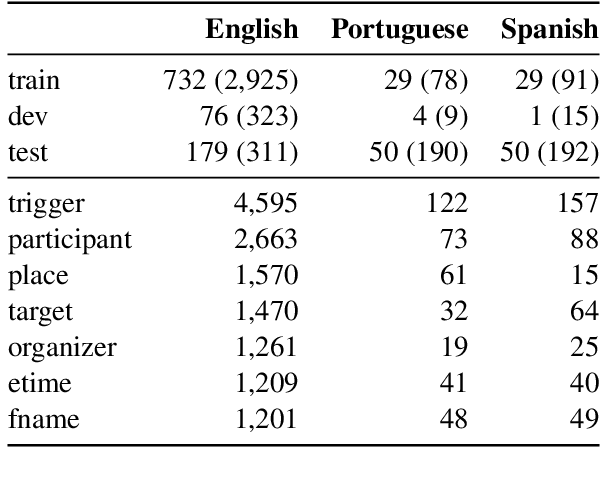
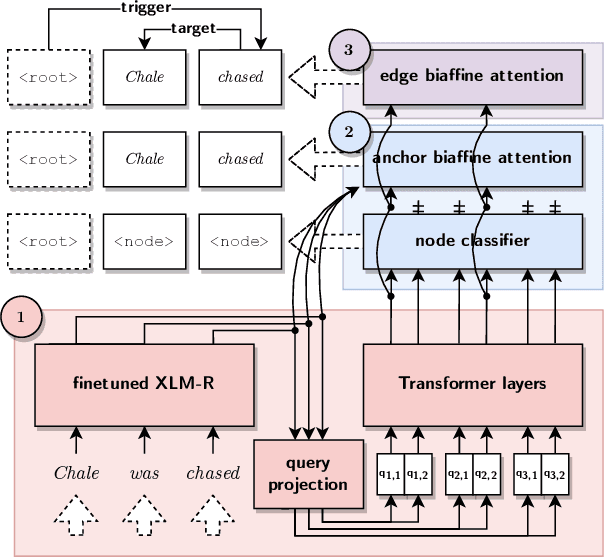
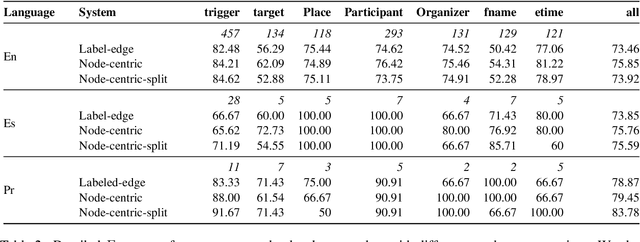
Abstract:This paper presents our submission to the 2022 edition of the CASE 2021 shared task 1, subtask 4. The EventGraph system adapts an end-to-end, graph-based semantic parser to the task of Protest Event Extraction and more specifically subtask 4 on event trigger and argument extraction. We experiment with various graphs, encoding the events as either "labeled-edge" or "node-centric" graphs. We show that the "node-centric" approach yields best results overall, performing well across the three languages of the task, namely English, Spanish, and Portuguese. EventGraph is ranked 3rd for English and Portuguese, and 4th for Spanish. Our code is available at: https://github.com/huiling-y/eventgraph_at_case
EventGraph: Event Extraction as Semantic Graph Parsing
Oct 16, 2022

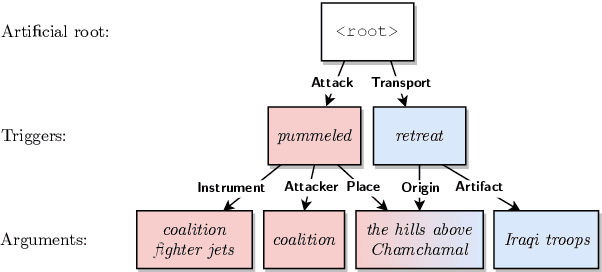
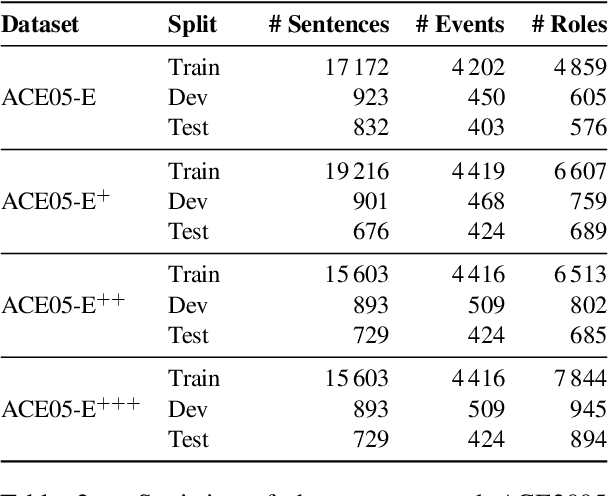
Abstract:Event extraction involves the detection and extraction of both the event triggers and corresponding event arguments. Existing systems often decompose event extraction into multiple subtasks, without considering their possible interactions. In this paper, we propose EventGraph, a joint framework for event extraction, which encodes events as graphs. We represent event triggers and arguments as nodes in a semantic graph. Event extraction therefore becomes a graph parsing problem, which provides the following advantages: 1) performing event detection and argument extraction jointly; 2) detecting and extracting multiple events from a piece of text; and 3) capturing the complicated interaction between event arguments and triggers. Experimental results on ACE2005 show that our model is competitive to state-of-the-art systems and has substantially improved the results on argument extraction. Additionally, we create two new datasets from ACE2005 where we keep the entire text spans for event arguments, instead of just the head word(s). Our code and models are released as open-source.
Uppsala NLP at SemEval-2021 Task 2: Multilingual Language Models for Fine-tuning and Feature Extraction in Word-in-Context Disambiguation
Apr 09, 2021


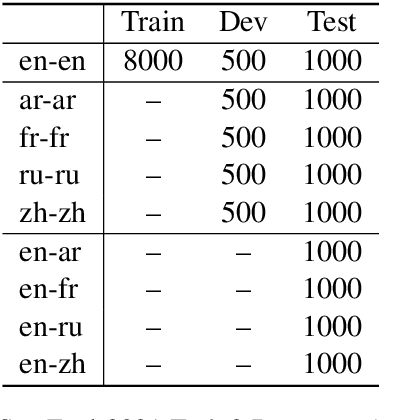
Abstract:We describe the Uppsala NLP submission to SemEval-2021 Task 2 on multilingual and cross-lingual word-in-context disambiguation. We explore the usefulness of three pre-trained multilingual language models, XLM-RoBERTa (XLMR), Multilingual BERT (mBERT) and multilingual distilled BERT (mDistilBERT). We compare these three models in two setups, fine-tuning and as feature extractors. In the second case we also experiment with using dependency-based information. We find that fine-tuning is better than feature extraction. XLMR performs better than mBERT in the cross-lingual setting both with fine-tuning and feature extraction, whereas these two models give a similar performance in the multilingual setting. mDistilBERT performs poorly with fine-tuning but gives similar results to the other models when used as a feature extractor. We submitted our two best systems, fine-tuned with XLMR and mBERT.
 Add to Chrome
Add to Chrome Add to Firefox
Add to Firefox Add to Edge
Add to Edge